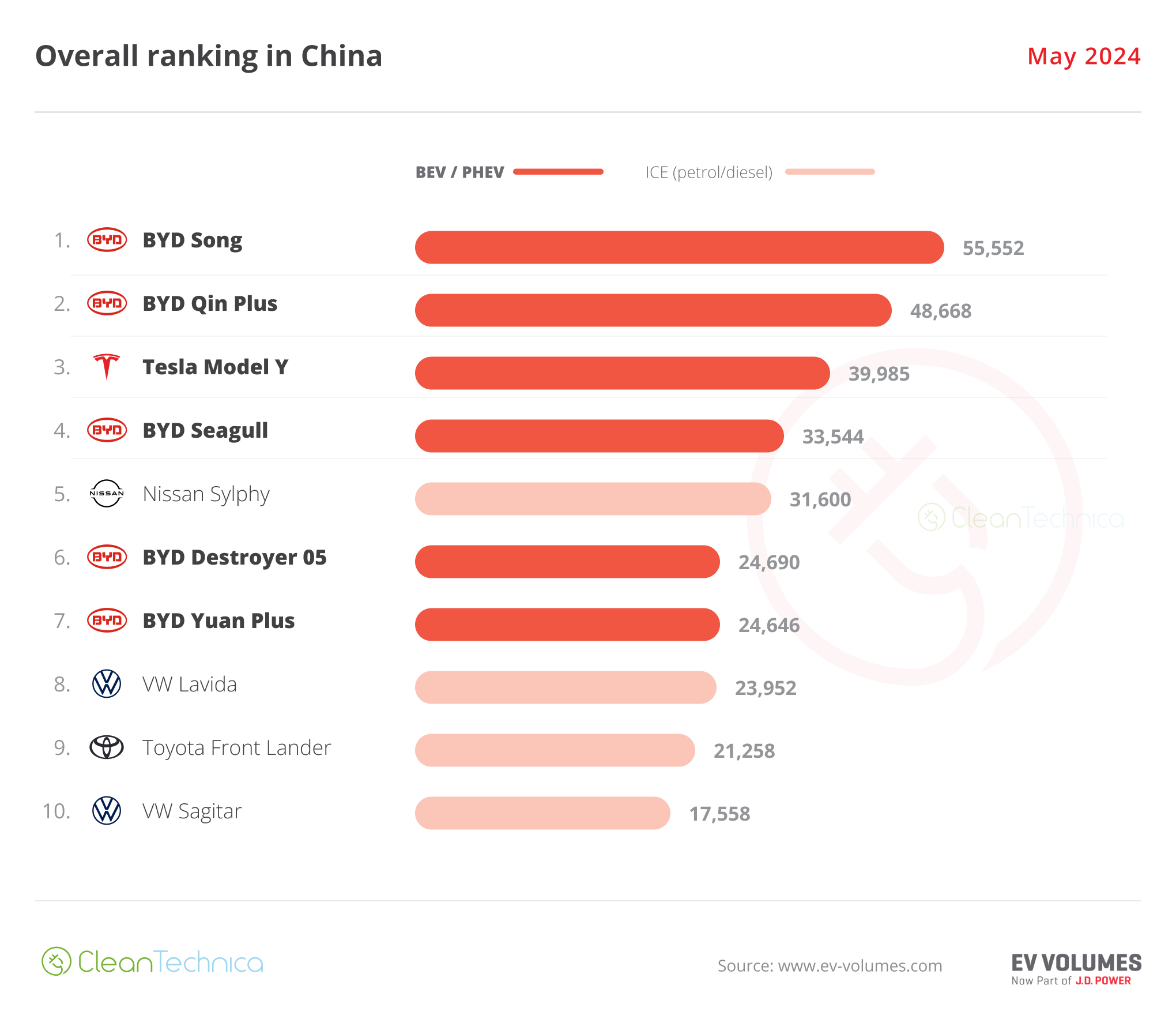Gold’s vexing disconnect from reported inflation took center stage again this week. The latest US inflation read came in hotter than expected, yet gold didn’t surge despite being the classic inflation hedge. This strange incongruity has festered for a few years now thanks to the Fed’s incessant manipulations of rates and market psychology. But the efficacy of that is waning with this central bank’s monster rate-hike cycle over.
Early yesterday the US Bureau of Labor Statistics released its latest Consumer Price Index report, the primary inflation gauge traders follow. December’s headline-CPI print climbed 0.3% month-on-month and 3.4% year-over-year, 0.1% and 0.2% hotter than expectations. The core CPI excluding food and energy rose 0.3% MoM and 3.9% YoY, in-line and 0.1% hotter. Rising shelter costs accounted for 2/3rds of that.
With three of the CPI’s four key metrics showing inflation worsening again, gold should’ve caught a bid. For centuries if not millennia, investors have upped their gold portfolio allocations in inflationary times. General price increases are fueled by fiat-money-supply growth, which far outpaces gold mined-supply growth. That only runs about 1% annually, naturally constrained by the many challenges of mining gold.
Unfortunately this odd gold-inflation disconnect is nothing new. Gold has been rallying on cooler inflation and selling off on hotter inflation for several years now! In mid-July for example, gold surged 1.3% the day the latest headline CPI printed just 0.1% cooler in both monthly and annual terms. Earlier in mid-September 2022, gold plunged 1.3% the day that latest headline CPI came in hotter by 0.2% MoM and 0.3% YoY.
Gold reacting to reported-inflation surprises counter to long precedent is illogical and upside-down. But this stunning gold-inflation disconnect goes way beyond inflation-data reactions. This chart superimposes gold’s price action in recent years over the annual headline-CPI changes. That popular inflation gauge experienced its first super-spike since the 1970s in recent years! Inflation has been running extremely hot.
This latest inflation super-spike was born in May 2020, when the CPI troughed rising a mere 0.1% YoY! That was an extraordinary anomaly resulting from the widespread pandemic lockdowns when COVID-19 first reared its ugly head. Knowing little about this novel virus then, people were really scared and heavily curtailed their economic activity. The resulting plunging consumer demand forced general prices lower.
Gold averaged $1,719 that month when the seriously-shuttered US economy was threatening to roll over into a deflationary depression. With the US stock markets plummeting over a third in just over one month, top Fed officials panicked! So they redlined their monetary printing presses to start injecting what would grow into trillions of new dollars into the economy, monstrously ballooning the Fed’s balance sheet after.
That’s effectively the monetary base underlying the US dollar supply. Over 25.5 months starting just before that pandemic-lockdown stock panic, the Fed’s balance sheet skyrocketed an absurd 115.6%! Top Fed officials conjured up $4,807b of new dollars out of thin air, literally more than doubling the entire US money supply in just over a couple years! Vastly more dollars out there guaranteed big inflation was coming.
After an exhaustive study of US monetary history, the legendary American economist Milton Friedman declared in 1963 that “Inflation is always and everywhere a monetary phenomenon.” The endless goods and services comprising the vast US economy can’t be grown fast. So when monetary growth rates well exceed economic growth, relatively-more dollars chase and bid up prices of relatively-less goods and services.
The Fed’s dumbfounding monetary deluge really started appearing in the CPI in April 2001, when it rose faster than 4.0% YoY for the first time in 12.6 years. From there reported inflation kept on accelerating even more dramatically. The headline CPI finally peaked at scorching 9.1% YoY gains in June 2022! That proved the hottest CPI read since November 1981, late in the last inflation super-spike’s lifespan!
That month gold averaged $1,837. So during the worst inflation since the 1970s, monthly-average gold prices merely rallied 6.9%! Some argued gold’s classic role as the leading inflation hedge had ended forever. Indeed gold’s performance in this latest inflation super-spike was dreadful compared to 1970s precedent. That decade actually suffered two distinct inflation super-spikes as measured by the same CPI.
The first ran 30 months into December 1974, when the CPI’s YoY increase surged from 2.7% to 12.3%. Monthly-average gold prices soared 196.6% during that span! That decade’s second inflation super-spike was much larger and longer. It was born at a 4.9%-YoY CPI increase, and crested at a soul-crushing 14.8% in March 1980. During those 40 months, monthly-average gold prices skyrocketed an amazing 322.4%!
So gold meandering slightly higher through this latest inflation super-spike’s 25 months defied pretty much all historical precedent. With inflation raging out of control thanks to extreme Fed money printing, gold prices absolutely should’ve reflected that. Yet they didn’t, for the same reasons gold sold off after this week’s hotter CPI. Fed manipulations of interest rates and market psychology greatly distorted everything.
With the headline CPI surging over 7.0% YoY in December 2021, top Fed officials were very worried about the inflation monster they had unleashed. So they finally started hiking rates off zero in March 2022. That rate-hike cycle would ultimately grow utterly gargantuan, fully 11 hikes upping the federal-funds rate by an extreme 525 basis points in just 16.3 months! That included four 75bp monster hikes in a row!
With the Fed so hellbent on hiking fast, traders hung on every word from top Fed officials. And every important economic-data release was viewed through a how-will-this-influence-the-Fed lens. That wasn’t just CPI inflation, but wholesale PPI inflation, Fed officials’ favorite PCE inflation gauge, monthly US jobs, and other key data. All recent years’ reports were immediately weighed as hawkish or dovish for the Fed.
Hotter-than-expected inflation data or stronger jobs growth increased the odds the Fed would keep aggressively hiking. Cooler inflation or weakening jobs gave the Fed cover to slow its blistering rate hikes. This what-will-the-Fed-do dynamic hanging on every major economic-data report directly drove gold’s illogical disconnect from inflation. Fed watching trumped everything else in the entire financial markets!
Top Fed officials certainly knew this, but enjoying their fame kept on meddling anyway. I wasn’t yet old enough to study markets in the 1970s, but my understanding is the Fed was far more subtle then. It did hike rates, but quietly without fanfare. The FOMC didn’t release statements detailing each meeting’s monetary-policy decisions, Fed officials didn’t predict future rate trajectories, and the Fed chair didn’t hold pressers!
During those last inflation super-spikes, Fed officials weren’t financial celebrities like today. They wisely didn’t want to impair efficient market functioning, so they did their work in the background. Apparently back then changes in the federal-funds rate weren’t even disclosed! Traders had to infer them based on market action. So the entire financial markets and gold specifically weren’t slaved to Fed machinations then.
While Fed officials’ flamboyant meddling is the main driver of gold’s recent disconnect from inflation, the transmission mechanism to prices is gold-futures trading. It allows extreme leverage far beyond the 2x legal limit in stock markets. Each gold-futures contract controls 100 ounces of gold, worth $202,390 at mid-week prices. Yet speculators are only required to hold cash margins of $8,300 for each contract traded.
That enables crazy maximum leverage of 24.4x, exceedingly risky! At 24.4x a mere 4.1% gold move against positions would wipe out 100% of capital risked! That forces these hyper-leveraged traders to have ultra-myopic short-term focuses. They can’t afford to be wrong for long, so they can only care what gold is likely to do in coming hours or days. They watch the US dollar’s fortunes for their primary trading cues.
Fed rate decisions certainly affect the US dollar. Rate hikes increase yields in dollar-denominated bonds led by US Treasuries. That makes them more attractive to foreign traders, fueling dollar buying. So Fed-hawkish economic data is legitimately dollar-bullish. If hotter-than-expected inflation increases odds for either more Fed rate hikes or holding the federal-funds rate higher for longer, the US dollar is bid higher.
That certainly happened in spades in recent years, especially in mid-2022 during the height of the Fed’s record rate-hike cycle. The benchmark US Dollar Index skyrocketed a staggering 16.7% higher in just 6.0 months as the Fed unleashed four monster 75bp hikes in a row! That catapulted the USDX to an extreme 20.4-year secular high, explaining gold’s 20.9% plunge then. That unsustainable anomaly soon reversed hard.
As the exceedingly-overbought and wildly-crowded long-dollar trade rolled over into early 2023, gold mean reverted sharply higher regaining all its lost ground. But that Fed-rate-hike-driven gold plunge due to gold-futures speculators dumping massive contracts on a soaring US dollar is the main reason gold recently disconnected from inflation. This is a temporary illusion fueled by Fed-driven gold-futures trading.
Ironically Fed-rate-hike cycles are actually bullish for gold historically. Leading into the Fed’s maiden hike in early 2022, I did a comprehensive study of gold’s performances during all hiking cycles of the modern monetary era since 1971. There were twelve of them before this latest record one. Gold averaged strong 29.2% gains across their exact spans! Gold tended to fare better when those rate hikes were more gradual.
This latest monster hiking cycle was anything but, proving the most violent in the Fed’s entire history. Yet gold still edged up 3.0% through its exact duration, weathering 11 hikes for 525bp! Gold’s gains would’ve been far better had it not gotten crushed by that colossal dollar rally. The gold-futures speculators are dead-wrong in assuming higher rates are bearish for gold, blinded by their extreme-leverage-induced myopia.
Because of that extreme leverage, gold-futures traders wield outsized influence over gold prices. A dollar deployed in gold futures at 24x leverage has 24x the price impact on gold as a dollar invested outright! And there is one final related piece to this gold-inflation-disconnect puzzle. Gold-futures specs can only dominate gold prices when investors are away, as their vast pools of capital dwarf specs’ far-smaller ones.
Any way you slice it, gold investment demand has been dismal in recent years. From gold’s pandemic-stock-panic low in mid-March 2020 to its latest record close in late December 2023, it has powered 41.1% higher. Yet during that same span, the combined holdings of the mighty world-dominant GLD and IAU gold ETFs have slumped 1.9%. They are the best daily high-resolution proxy for global gold investment demand.
From gold’s monster-dollar-rally low in late September 2022 to late December 2023, it surged up 28.0%. Yet investors didn’t care, as GLD+IAU holdings actually fell 10.5% in that span! Investors have been missing in action in gold for years, allowing hyper-leveraged gold-futures speculators to run amok in bullying around gold prices. Investors haven’t yet returned because gold’s price action hasn’t been good enough.
Investors love chasing winners, and flood into gold during major uplegs to ride its upside momentum. Their big buying accelerates gold uplegs, easily overpowering whatever the gold-futures specs are doing. But investors need plenty of convincing before buying back in, gold has to first rally high enough for long enough to generate sufficient excitement. That hasn’t yet happened, so gold’s inflation disconnect has lingered.
Investors are still apathetic on gold because its gold-futures-driven price action in recent years hasn’t been bullish enough. Gold’s futures price is unfortunately its world reference one, which investors see. So gold psychology has been artificially suppressed in recent years by hyper-leveraged gold-futures trading fading the US dollar’s fortunes on Fed officials’ flamboyant meddling! Is gold doomed to this lot forever?
No way, markets are perpetually cyclical. Extremes of price and sentiment never last for long before mean reverting and overshooting the other way. And that’s coming this year, accelerating gold’s record breakout upleg in 2024. This gold-inflation disconnect’s days are numbered, and way-higher gold prices are coming on the other side. The catalyst will be the Fed shifting from a higher-rates-for-longer bias to cutting.
Top Fed officials last hiked their federal-funds rate way back in late July, and have increasingly signaled since they are done hiking. That was especially apparent at the last FOMC meeting in mid-December. There the FOMC statement added a qualifier making further hikes sound less likely, top Fed officials cut their year-end-2024 FFR projections by 50bp, and the Fed chair himself said rate-cut timing was discussed!
A new Fed-rate-cut cycle will be born this year, possibly as soon as mid-March but almost certainly by summer. With the Fed starting to cut rates and increasingly expected to do more, all the gold-stunting dynamics of recent years will reverse. The still-high US dollar will sell off on economic data supporting more cuts faster. That will fuel gold-futures buying, pushing gold deeper into nominal-record-high territory.
That will increasingly attract back investors, whose buying to chase gold’s gains will overpower most gold-futures speculators’ selling. This process will unwind gold’s anomalous inflation disconnect, restoring normal inflation-hedge behavior. Prevailing gold prices will ultimately reflect the still-vastly-higher US-dollar supply thanks to the Fed’s extreme money printing in recent years. Rate cuts will affect that too.
In addition to hiking rates aggressively since early 2022, the Fed has been gradually shrinking its balance sheet. Previously-monetized bonds maturing are being slowly rolled off without repurchases, contracting the money supply. Fed officials will have to end this quantitative-tightening bond selling around when they start cutting rates, since they are opposing monetary policies at cross purposes. So QT will soon be done!
Remember the Fed ballooned its balance sheet which is effectively the monetary base by 115.6% in just over a couple years after March 2020’s pandemic-lockdown stock panic. Despite the QT since, the Fed’s balance sheet remains a shocking 84.7% higher in early January 2024! Of the Fed’s crazy $4,807b of money printing, fully $3,522b or nearly three-fourths is still in the economy! Gold needs to normalize to that.
Inflation is simply general price levels rising to reflect expanded money supplies. I don’t know how high the Fed’s balance sheet will be when it kills QT, but let’s assume it is still 2/3rds above February 2020 levels. That means general price levels should stabilize about 2/3rds higher less economic growth in recent years. Gold prices will also reflect that extra money, maybe 2/3rds higher less mined-supply growth.
Since American voters hate inflation which is a punitive stealth tax, the CPI is intentionally lowballed by the US government to understate inflation. According to the CPI, general price levels are only 18.6% higher than February 2020’s! I don’t know about you, but I don’t believe that for a minute. Based on what I’ve experienced running a small business and household, price levels seem at least 50% higher today.
The headline CPI’s 18.6% inflation over the past 3.8 years implies about 4.5% annual price increases. There’s no way they’ve been that small, we’re all experiencing annual inflation rates closer to 10% to 20% since the lockdowns. Real-world examples are legion, inflation is running way hotter than the Biden Administration’s bureaucrats claim. The overall total is closer to 85% Fed-balance-sheet growth than 19% CPI.
But to be conservative, let’s assume the US money supply will stabilize this year around 2/3rds higher than pre-lockdown levels. Gold averaged $1,596 in February 2020 with a far-smaller Fed balance sheet. If gold normalizes proportionally to that being 2/3rds higher, that implies prices heading over $2,650. Even rallying a fraction of that distance would radically improve psychology, bringing investors back in droves!
The biggest beneficiaries of much-higher prevailing gold prices as that inflation disconnect is unwound will be the gold miners’ stocks. The GDX majors soared 134.1% during gold’s last mighty 40.0% upleg in mid-2020 seeing new records fueled by investors flooding back in. Smaller fundamentally-superior mid-tiers and juniors tend to well outperform, and our newsletter trading books are currently full of cheap great ones.
Successful trading demands always staying informed on markets, to understand opportunities as they arise. We can help! For decades we’ve published popular weekly and monthly newsletters focused on contrarian speculation and investment. They draw on my vast experience, knowledge, wisdom, and ongoing research to explain what’s going on in the markets, why, and how to trade them with specific stocks.
Our holistic integrated contrarian approach has proven very successful, and you can reap the benefits for only $10 an issue. We extensively research gold and silver miners to find cheap fundamentally-superior mid-tiers and juniors with outsized upside potential. Sign up for free e-mail notifications when we publish new content. Even better, subscribe today to our acclaimed newsletters and start growing smarter and richer!
The bottom line is recent years’ strange gold-inflation disconnect is an unsustainable anomaly. Gold has been dominated by hyper-leveraged gold-futures trading, driven by the US dollar’s fortunes. Those have been strong due to aggressively-hawkish Fed meddling in recent years. But with the Fed’s monster rate-hike cycle over and a new cutting one soon coming, this counter-historical dynamic will reverse and unwind.
The still-high US dollar will weaken considerably as the Fed increasingly waxes dovish and rate-cut hype builds. That will spawn leveraged gold-futures buying, pushing gold higher which will start attracting back missing-in-action investors. Their big buying will ultimately help gold normalize relative to inflated money supplies. That portends much-higher gold prices in coming years, catapulting battered gold stocks way higher.
********





